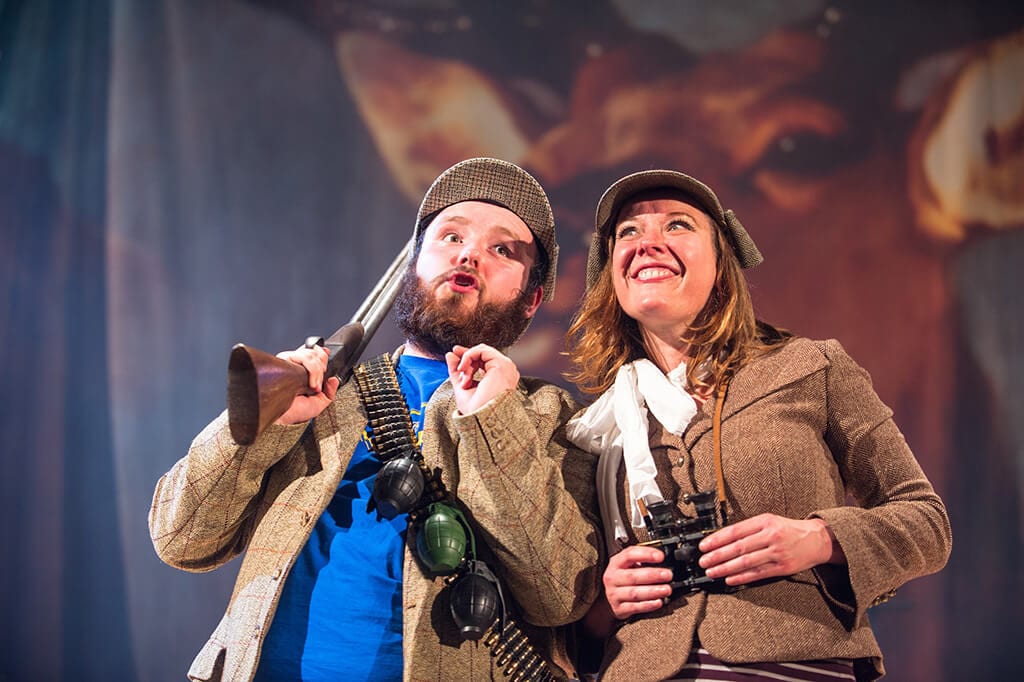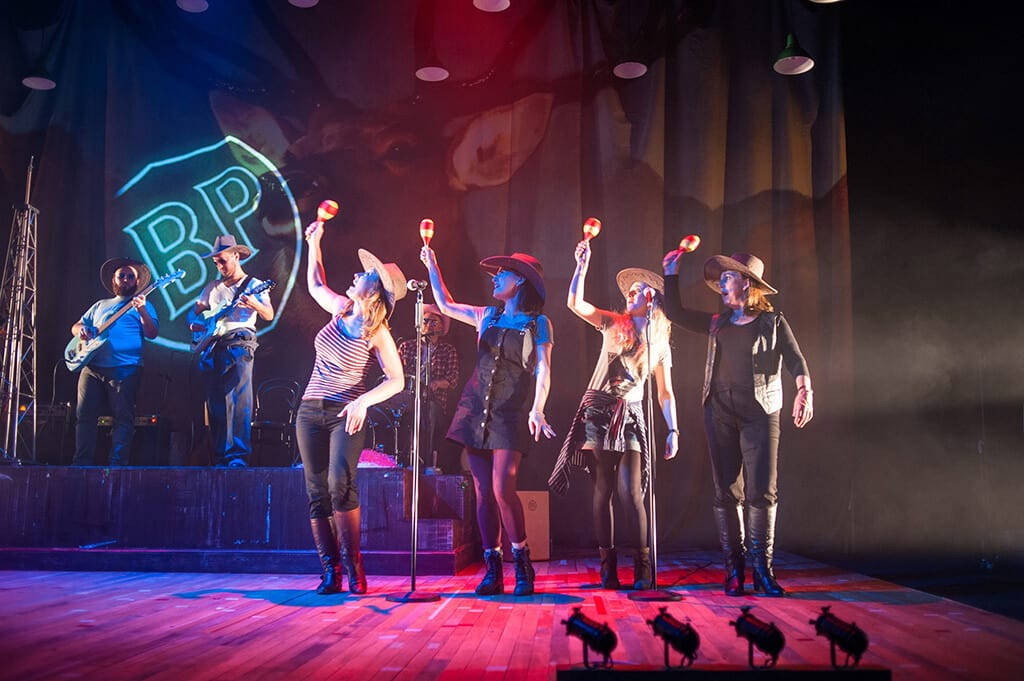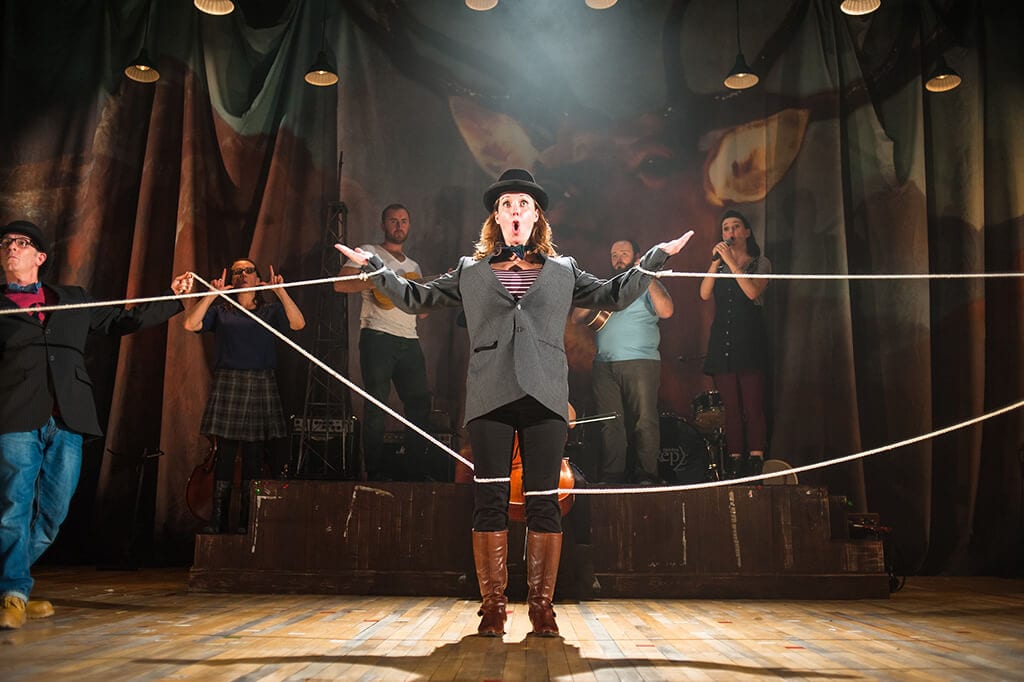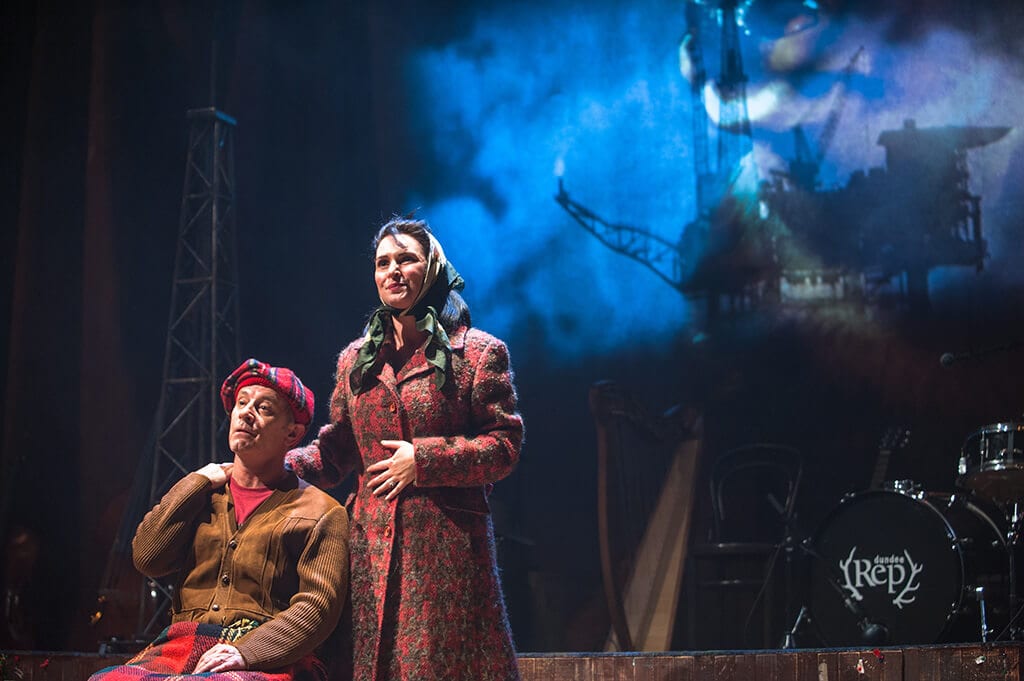This week Joe Douglas’s production of John McGrath’s political drama The Cheviot, the Stag and the Black, Black Oil reaches the final stage of its tour around Scotland, the first in twenty years. The play paints a vivid picture of Scottish history from the Highland Clearances and the rise of the eponymous ‘Great sheep’, the Cheviot, which brought an end to traditional forms of farming and resulted in the expulsion of the Highlanders, to the discovery of the North Sea oil and its subsequent exploitation.
There is a lot to take in. The play constantly moves between times and genres – confusingly at times. Theatre, pantomime, storytelling, musical, ceilidh… It is hard to think of a genre this joyful mayhem of a production doesn’t touch upon, and the actors rise to the challenge with unflagging energy. The range of issues tackled, from colonial violence to capitalism and the appropriation of resources by private companies, is still ambitious to the point of being dizzying, and hasn’t aged at all for the contemporary audience. The production is spiced up by the addition of a few contemporary figures – even Donald Trump is granted some time in the spotlight.
Indeed, at no point does the play attempt to create any sense of theatrical illusion. We sit down to the sound of the cast singing on stage. The actors arrive in plain clothes and change costumes in front of us, helping themselves to a clothes rail. The décor is kept to a minimum – a screen, some crates on wheels. We are not expected to believe, but to join in. The play rests on comings and goings between stage and stalls, between performers and viewers, and the cast’s enthusiasm is clearly catching. The Cheviot demands, and succeeds in gaining, sustained participation and attention from its audience.
Bringing The Cheviot, the Stag and the Black, Black Oil to the stage may seem a daunting feat. At the time of its first production by 7:84, in 1973, the play was an absolute hit, and defined the standards for political theatre in Scotland. As a result, it may be hard to come to the play without some idea or second-hand knowledge of its prominent place in Scottish theatre. As a non-Scottish viewer, however, I did not feel left out of the play’s politics. The production has a knack for making you feel engaged and involved. The mix of English and Gaelic is skilfully balanced. Far from being a hindrance, our inability to fully understand the script becomes integral to the play’s upfront argument on national identity. It is up to the audience to decide whether to adhere or to take issue with it.




